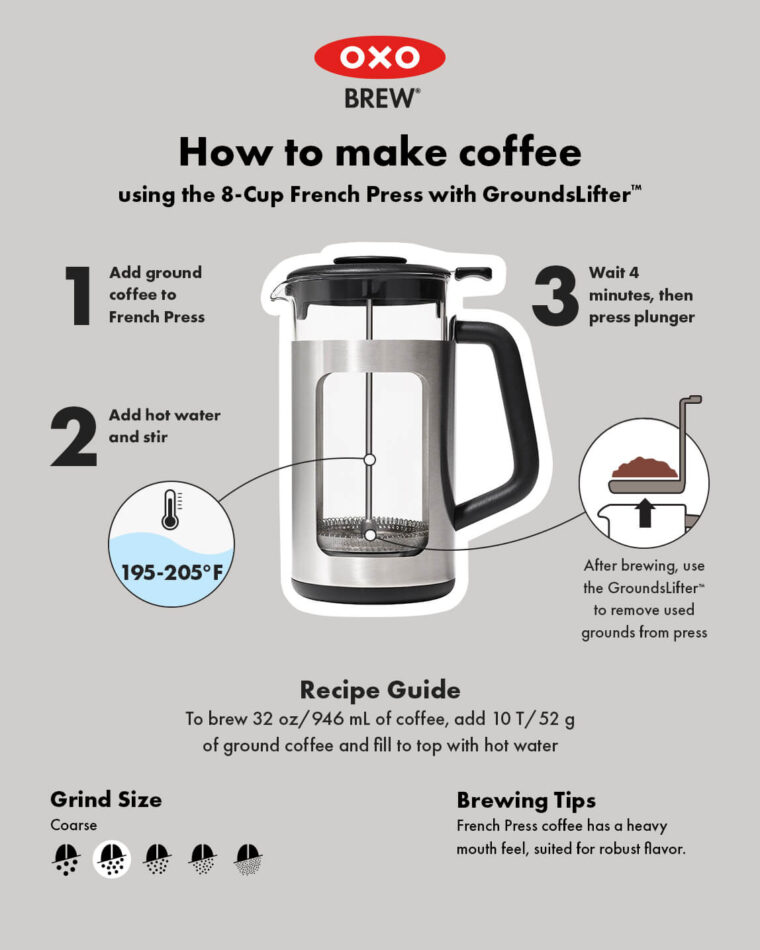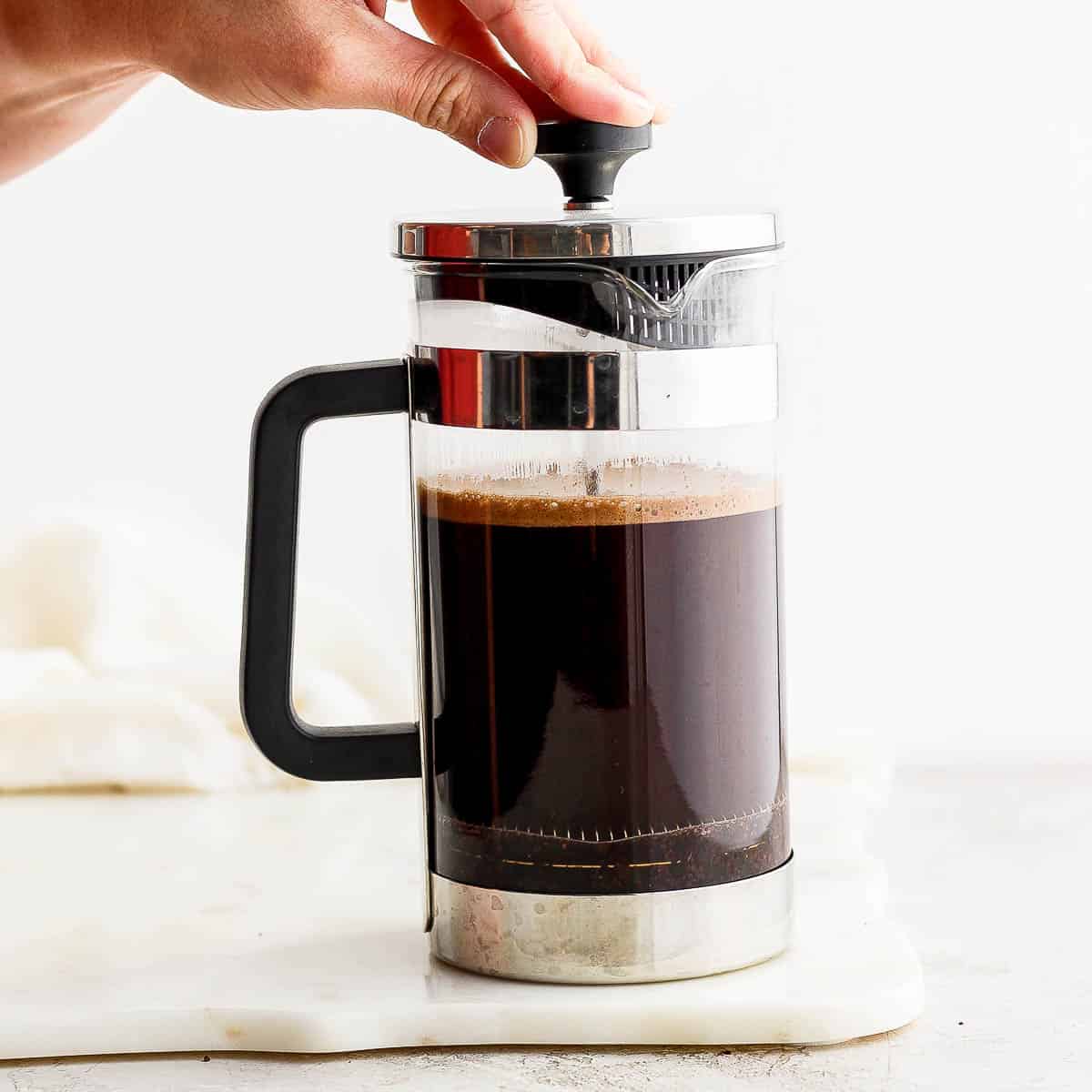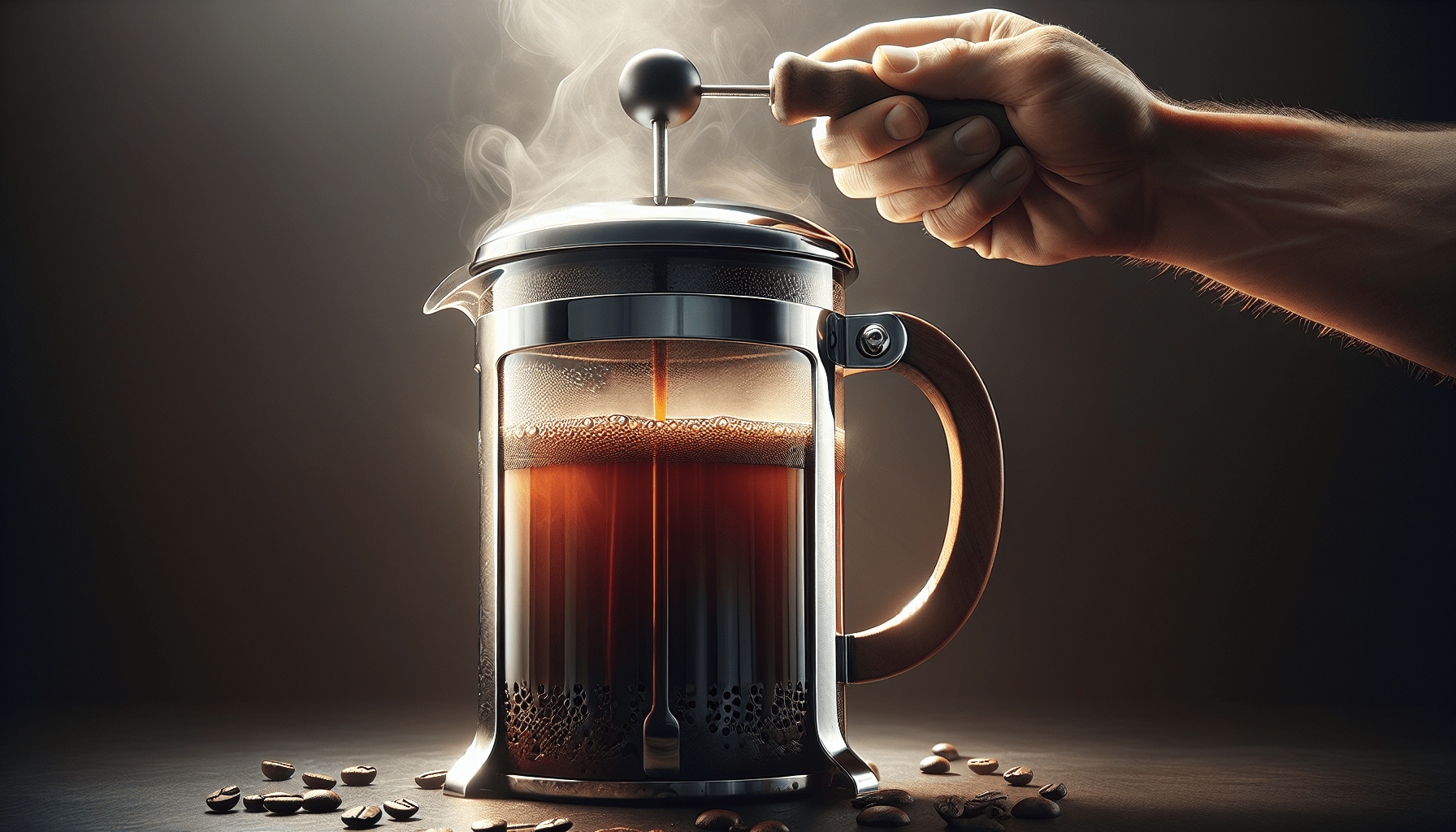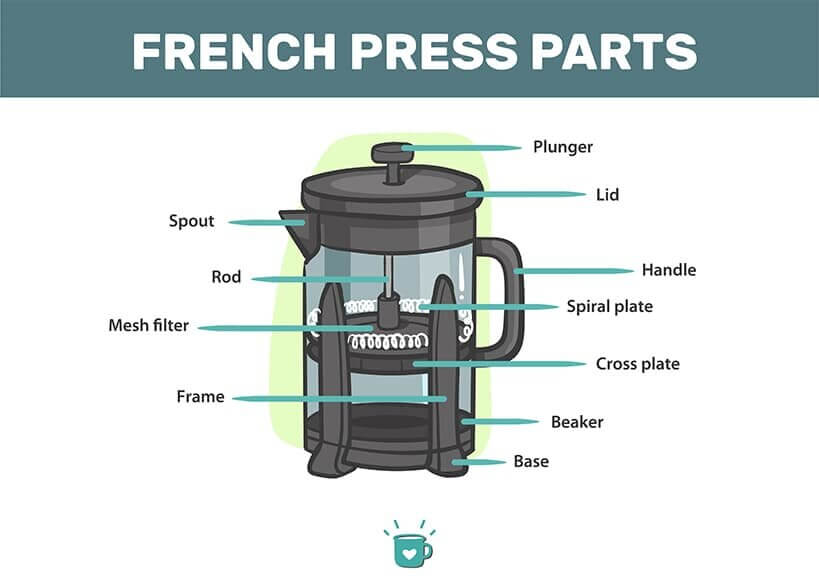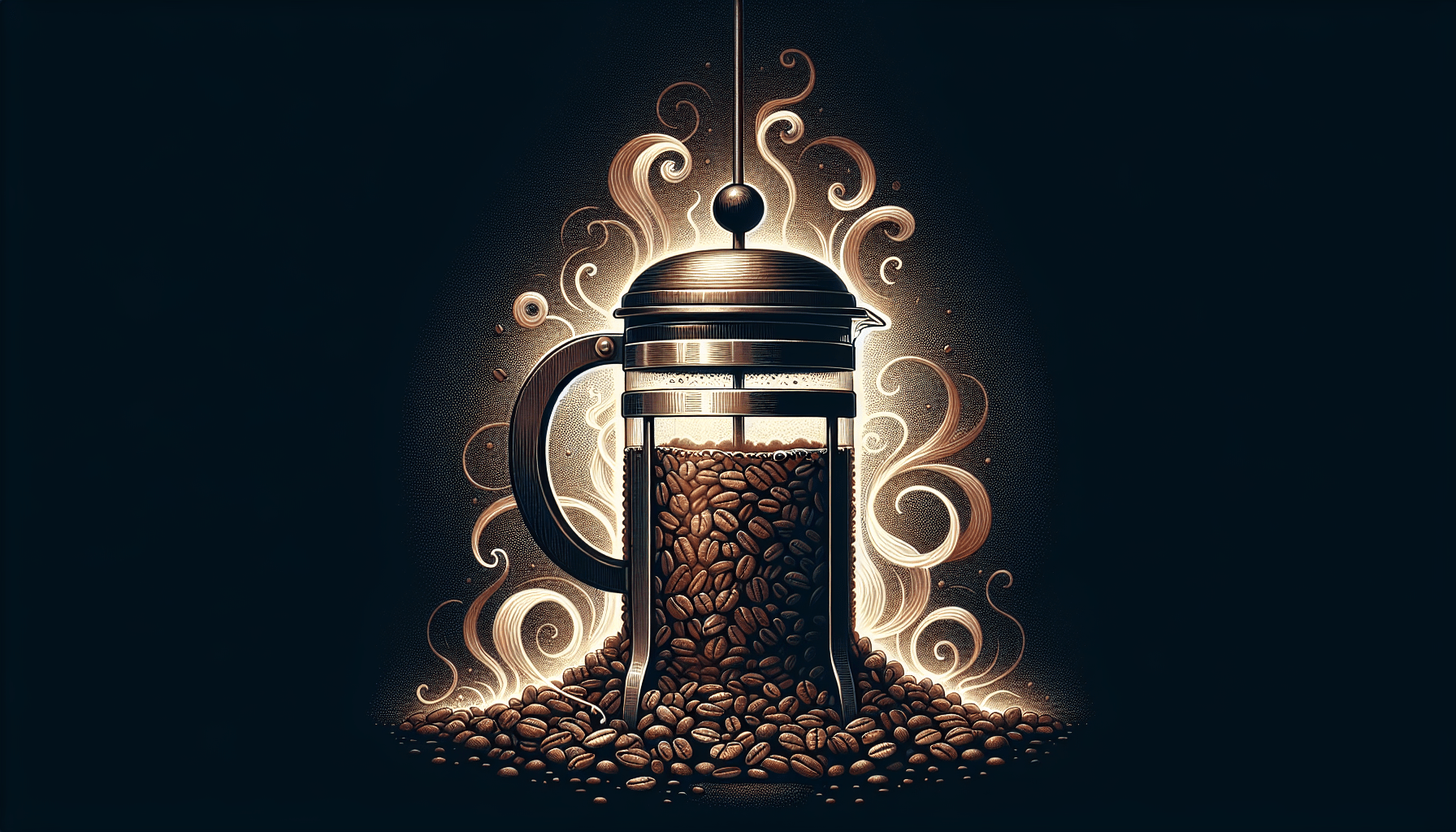Have you ever wondered what exactly a French press is? If so, look no further! A French press is a popular coffee-making device that is renowned for its simplicity and rich flavor. It consists of a cylindrical glass or stainless steel container with a plunger and a mesh filter. With just a few easy steps, you can quickly brew a delicious cup of coffee that rivals your favorite café. Get ready to learn all about this fantastic brewing method and become a French press pro!
Definition
Explanation of what a French press is
A French press, also known as a press pot or plunger pot, is a popular brewing device used to make coffee. It consists of a cylindrical glass or stainless steel container, a plunger with a mesh filter, and a lid. This simple yet effective device allows you to brew a rich and full-bodied cup of coffee by immersing the coffee grounds in hot water and then separating them from the brewed coffee using the plunger.
Description of how it works
To brew coffee with a French press, you start by adding coarsely ground coffee into the container. Then, you pour hot water over the grounds and let it steep for a few minutes. After the desired brewing time has passed, you slowly press down the plunger, which pushes the filter down and separates the brewed coffee from the grounds. The coffee is then ready to be poured and enjoyed.
History
Origin of the French press
The French press was invented in the mid-19th century by a Frenchman named Attilio Calimani. However, the design and concept of immersing coffee grounds in water can be traced back even further to the 1800s in France. The original design featured a metal or mesh filter attached to a rod, which was pressed down to separate the coffee grounds from the brewed coffee.
Evolution of the design
Over the years, the French press has undergone some changes and improvements. In the 1920s, a Frenchman named Marcel Monnier patented a design that added the now-familiar plunger mechanism, which improved the separation process. Since then, various companies have introduced their own versions of the French press, experimenting with different materials, sizes, and styles. Today, you can find French presses made from glass, stainless steel, ceramic, and even travel-friendly options for coffee lovers on the go.
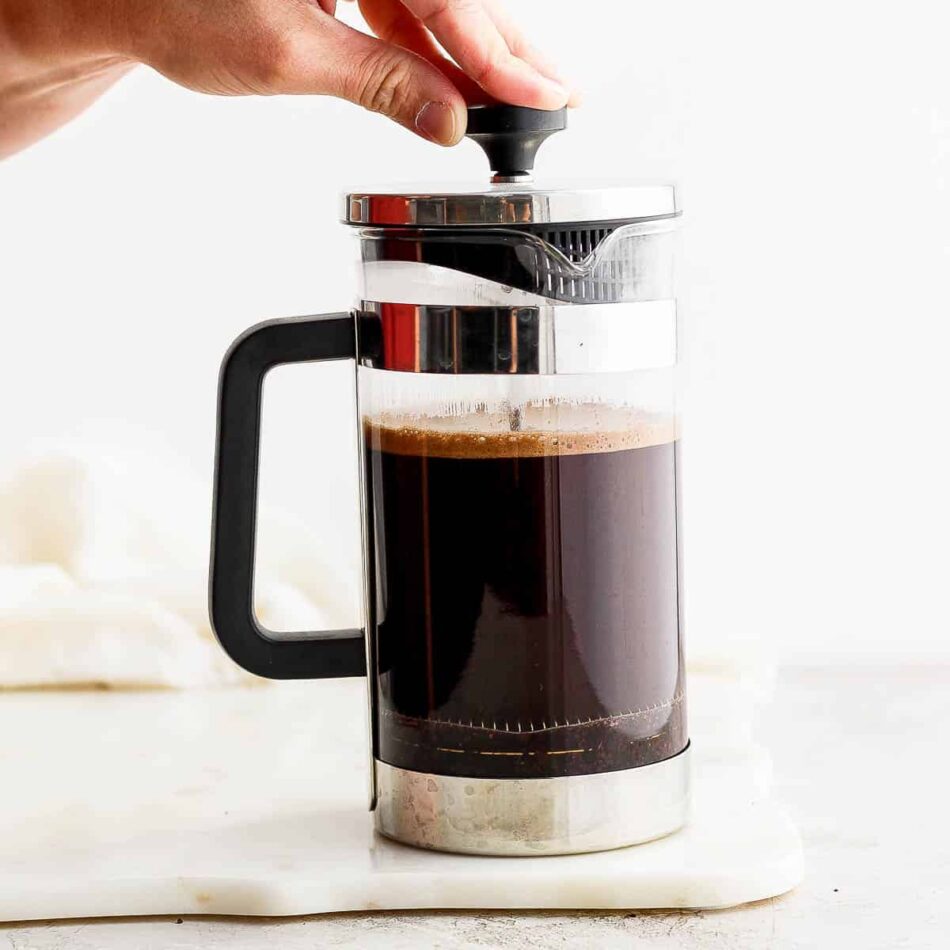
Components
Main parts of a French press
A French press consists of three main parts:
- Container: This is the vessel where you add the coffee grounds and water. It is typically made of glass or stainless steel, allowing you to see the brewing process.
- Plunger: The plunger is a rod with a filter attached to the bottom. It is used to separate the coffee grounds from the brewed coffee and is pressed down to complete the brewing process.
- Lid: The lid of a French press helps to retain heat during the brewing process and provides a convenient way to pour the coffee.
Detailed explanation of each component
The container of a French press is usually made of heat-resistant glass, allowing you to see the coffee as it brews. This transparency not only adds to the aesthetic appeal but also allows you to monitor the strength of your brew.
The plunger consists of a handle, a rod, and a mesh filter. The mesh filter is crucial in separating the coffee grounds from the brewed coffee, ensuring a smooth and sediment-free cup. It is usually made of stainless steel or nylon and is designed to catch even the finest coffee particles.
The lid is an important component as it helps to retain heat during the brewing process. Some lids may have additional features, such as a pouring spout or a built-in mesh filter to prevent any grounds from escaping when pouring.
Brewing Process
Step-by-step guide to using a French press
To brew coffee using a French press, follow these steps:
- Measure and grind your coffee beans to a coarse consistency.
- Heat water to the appropriate temperature (around 195-205°F or 90-96°C) and pour a small amount into the French press to preheat it.
- Add the desired amount of coffee grounds into the French press.
- Pour hot water over the coffee grounds, ensuring they are fully submerged. Stir gently to ensure even saturation.
- Place the lid on the French press, but do not press down the plunger just yet.
- Allow the coffee to steep for about 4 minutes to extract the flavors. Adjust the steeping time based on your personal preference for a stronger or milder brew.
- Slowly press down the plunger until it reaches the bottom, separating the coffee grounds from the brewed coffee.
- Pour the freshly brewed coffee into your favorite mug and enjoy.
Optimal brewing time and water temperature
The optimal brewing time for a French press is typically around 4 minutes. However, you can adjust the brewing time to your taste preferences. A longer steeping time will result in a stronger and more robust cup of coffee, while a shorter steeping time will yield a milder flavor.
When it comes to water temperature, it is recommended to use water between 195-205°F (90-96°C). This temperature range ensures proper extraction of flavors from the coffee grounds without scorching them.
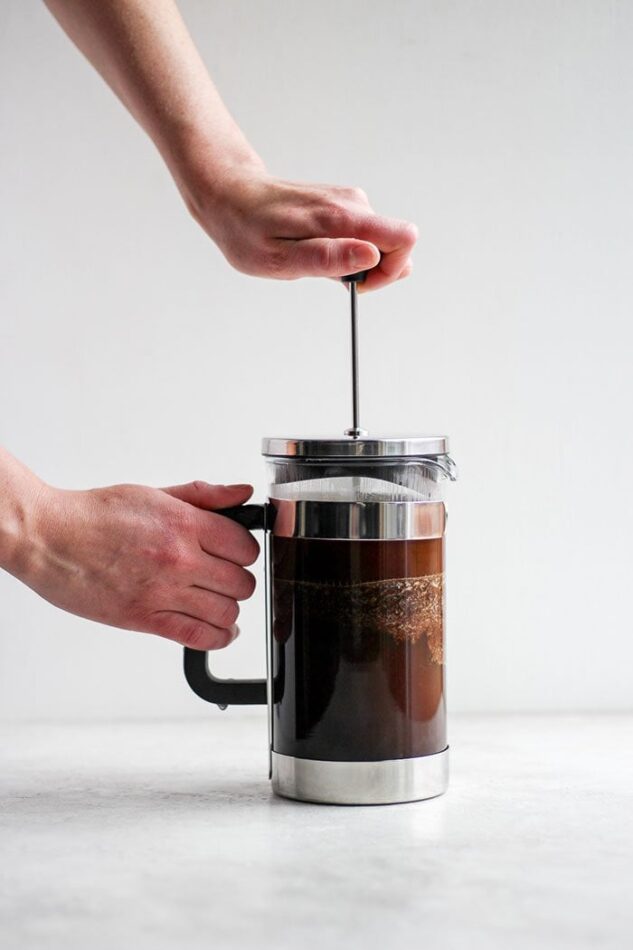
Advantages
Benefits of using a French press
Using a French press offers several advantages for coffee enthusiasts:
- Full-bodied flavor: The French press allows for full immersion brewing, which results in a rich and full-bodied cup of coffee. The mesh filter retains oils and fine particles, adding depth and complexity to the brew.
- Control over brewing variables: With a French press, you can control various brewing variables, such as the coffee-to-water ratio, brewing time, and water temperature. This allows you to fine-tune your brewing process to achieve the perfect cup every time.
- Versatility: Besides coffee, a French press can also be used to brew loose-leaf tea, infuse herbs, or make cold brew. Its versatility makes it a worthwhile investment for those looking for a multi-purpose brewing device.
- Environmentally-friendly: French presses require no disposable filters or single-use pods, making them an eco-friendly choice. The mesh filter can be easily cleaned and reused, minimizing waste.
- Cost-effective: French presses are relatively affordable compared to other brewing methods like espresso machines. Once you have made the initial investment, you only need coffee grounds and hot water to enjoy a delicious cup of coffee.
Comparison to other brewing methods
Compared to other brewing methods, the French press offers a distinct flavor profile and brewing experience. Here are some key differences:
- French Press vs. Drip Coffee Maker: While both methods extract flavors from coffee grounds, a French press brews coffee through immersion, resulting in a bolder taste. Drip coffee makers, on the other hand, often utilize paper filters and gravity to extract flavors, resulting in a cleaner and less intense cup.
- French Press vs. Espresso Machine: French press coffee is typically milder and less concentrated than espresso. Espresso machines use high pressure and finely ground coffee to extract concentrated flavors quickly. The French press is more suited for those who enjoy a longer, more contemplative brewing process.
Types
Variations of French press designs
French presses come in various designs, each with its own unique features and aesthetics. Some popular types include:
- Classic Glass French Press: This is the traditional design, featuring a glass container, a stainless steel plunger with a mesh filter, and a separate lid. This design allows you to visually appreciate the brewing process.
- Stainless Steel French Press: These French presses are made entirely of stainless steel, offering durability and heat retention. They are often preferred by those who want a more robust and long-lasting option.
- Ceramic French Press: Ceramic French presses provide excellent heat retention and are often favored for their elegant and timeless designs. They are a popular choice for those who appreciate both aesthetics and functionality.
- Travel French Press: Designed for coffee lovers on the go, travel French presses often feature a built-in mug or a double-wall construction to keep the coffee hot for longer periods. They are a convenient option for camping trips, road trips, or simply enjoying coffee on the move.
Different materials used in construction
French presses can be made from a variety of materials. The most common options include:
- Glass: Glass French presses are popular due to their transparency, allowing you to observe the brewing process. They are also easy to clean and maintain.
- Stainless Steel: Stainless steel French presses are known for their durability and heat retention capabilities. They are less prone to breakage and can keep your coffee hot for longer periods.
- Ceramic: Ceramic French presses are favored for their elegant and classic designs. They provide excellent heat retention and are often considered more aesthetically pleasing.
- Plastic: Some French presses are made from BPA-free plastic, making them lightweight and suitable for outdoor use. However, plastic French presses may not retain heat as well as other materials.
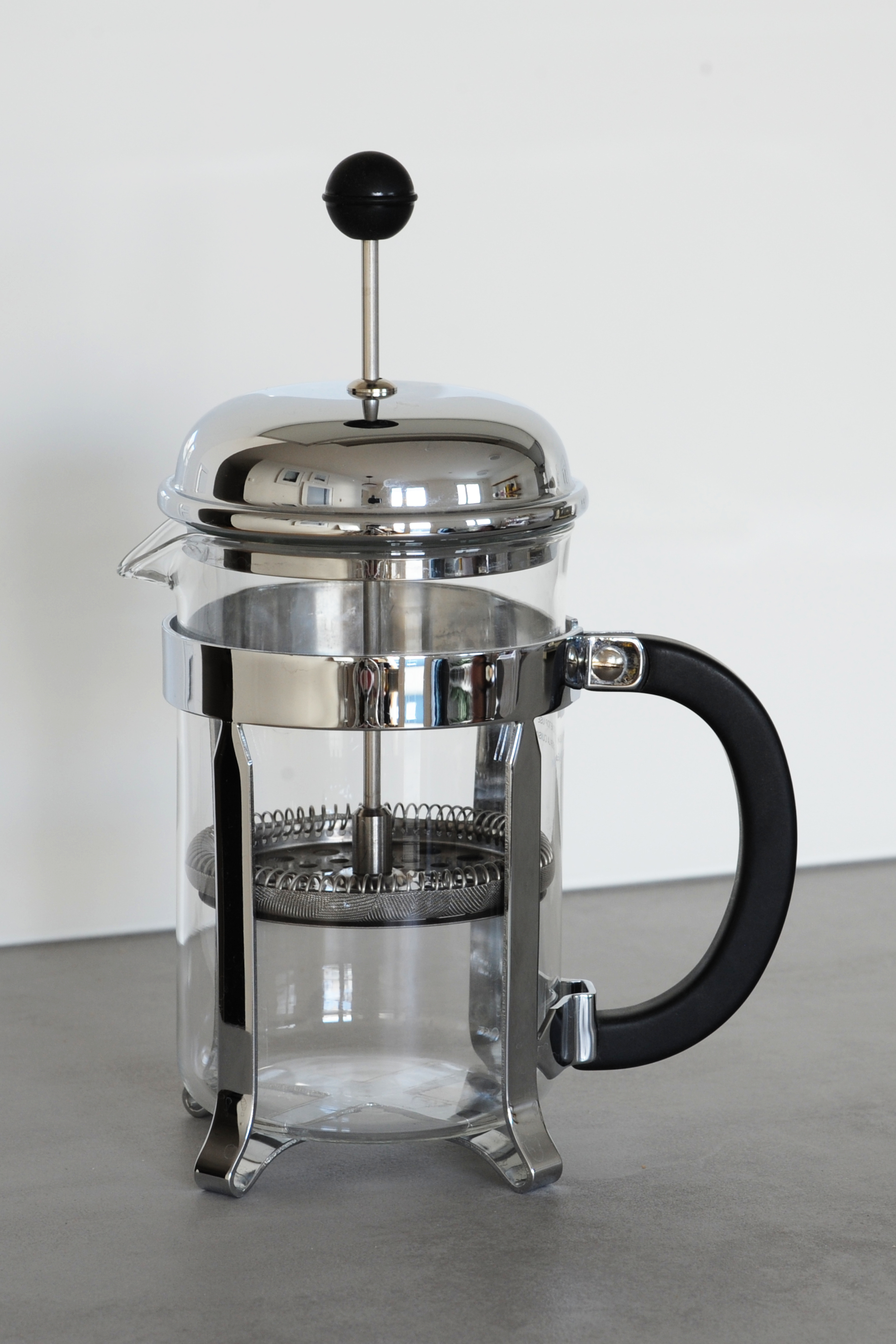
Maintenance
Cleaning and care instructions
To ensure the longevity of your French press and provide a consistently great brewing experience, it is important to clean and maintain it properly. Here are some cleaning and care instructions:
- Disassemble the French press by separating the plunger from the container and removing the filter.
- Rinse the components with hot water to remove any remaining coffee residue.
- Use a sponge or brush to clean the glass or stainless steel container, paying attention to the interior walls.
- Clean the mesh filter thoroughly by rinsing it under running water and using a brush to remove any trapped coffee grounds.
- Avoid using harsh detergents or abrasive sponges, as they can damage the French press. Mild dish soap is usually sufficient for cleaning.
- Dry the components thoroughly before reassembling the French press.
- Store the French press in a cool, dry place to prevent any odors or moisture buildup.
Tips to prolong the lifespan of a French press
To prolong the lifespan of your French press and keep it in excellent condition, consider the following tips:
- Handle with care: Glass French presses are fragile, so it is important to handle them with care to avoid accidental breakage. Avoid placing them near the edge of counters or overexerting pressure on the glass.
- Avoid abrupt temperature changes: Rapid temperature changes can cause glass to crack, so it is best to avoid pouring hot coffee into a cold glass or vice versa. Allow the glass to come to room temperature before immersing it in hot water or placing it in the fridge.
- Remove plunger gently: When removing the plunger from the French press, do so gently to prevent the filter from getting caught or damaged. Pull it up straight without applying excessive force.
- Regularly clean the filter: Coffee oils and residue can build up on the mesh filter over time, affecting the taste of your brew. Regularly clean the filter to maintain optimal flavor and prevent clogging.
- Store in a safe place: If you have a glass French press, store it in a safe place away from potential accidents or mishandling. Using a padded protective sleeve or storing it in a dedicated coffee equipment drawer can help prevent damage.
Tips & Tricks
Advice for achieving the best results
To achieve the best results with your French press, consider the following advice:
- Use freshly roasted coffee beans: Freshly roasted coffee beans will provide the best flavor and aroma. Invest in a grinder and grind your beans just before brewing for maximum freshness.
- Experiment with coffee-to-water ratio: The coffee-to-water ratio will affect the strength of your brew. Start with a ratio of 1:15 (1 gram of coffee to 15 grams of water) and adjust to your preference.
- Bloom the coffee: Before pouring the remaining water into the French press, bloom (pre-infuse) the coffee by adding a small amount of water and allowing it to sit for 30-60 seconds. This helps release trapped gases and promotes even extraction.
- Use the correct grind size: For French press brewing, use a coarse grind size. Finer grind sizes can result in over-extraction and produce a bitter taste.
- Stir gently: After adding water to the French press, give it a gentle stir to ensure all the coffee grounds are evenly saturated.
- Preheat the French press: Preheating the French press with a small amount of hot water helps maintain the brewing temperature and ensures a consistent extraction.
- Invest in a quality grinder: A good quality burr grinder will provide uniform grind size, which is crucial for optimal extraction. Investing in a grinder can greatly enhance the quality and consistency of your French press brews.
Common mistakes to avoid
To avoid common pitfalls and brewing mishaps, keep these mistakes in mind:
- Using fine grind size: Fine grind sizes can easily clog the mesh filter and result in over-extraction. Stick to a coarse grind size for the best results.
- Using boiling water: Boiling water can scorch the coffee grounds, resulting in a bitter and unpleasant brew. Aim for water temperatures between 195-205°F (90-96°C) for optimal extraction.
- Pressing the plunger too quickly: Pressing the plunger too quickly can cause fines (fine particles) to escape into the brewed coffee, resulting in a gritty texture. Press down slowly and steadily to minimize the sediment.
- Leaving the coffee in the French press: Leaving the coffee in the French press after brewing can result in over-extraction and a progressively bitter taste. Transfer the brewed coffee into a separate container or enjoy it immediately.
- Neglecting routine cleaning: Regular cleaning and maintenance are essential to keep your French press in good condition. Neglecting to clean it thoroughly can lead to clogging, off flavors, and decreased performance.

Alternative Uses
Creative uses for a French press
While primarily designed for brewing coffee, a French press can also be used for various other purposes. Here are a few creative ways to utilize your French press:
- Infused Water: Use your French press to infuse water with fruits, herbs, or spices. Simply add your desired ingredients to the container and pour water over them. Let it steep for a few minutes, then press down the plunger and enjoy your refreshing infused water.
- Homemade Cold Brew: Use your French press to make cold brew coffee. Instead of using hot water, add coarsely ground coffee and cold water to the French press. Let it steep overnight in the refrigerator, then press down the plunger to separate the grounds from the cold brew concentrate.
- Frothing Milk: Heat milk in a microwave-safe container and use the French press’s plunger to vigorously pump up and down to create frothy milk. This homemade frothed milk can be used for lattes, cappuccinos, or other specialty coffee drinks.
- Straining Homemade Broth or Soup: Instead of using a sieve or cheesecloth, use your French press to strain homemade broth or soup. The mesh filter can effectively separate solids from liquids, making it a convenient tool for achieving a clear and smooth texture.
Beyond brewing coffee
Besides its alternative uses, the French press embodies a spirit of versatility and resourcefulness. It encourages experimentation, creativity, and thinking outside the box. The simple yet effective design of the French press allows it to transcend its primary function and become a versatile tool for various culinary adventures.
Conclusion
Summary of the importance and versatility of a French press
The French press is a beloved tool among coffee enthusiasts for its simplicity, versatility, and ability to brew a rich and flavorful cup of coffee. Its design has evolved over the years, but the concept of immersing the coffee grounds in water remains a timeless and effective method of brewing. With its easy-to-use components and adjustable brewing variables, the French press offers unparalleled control and allows for a truly customized coffee experience.
Final thoughts on why it is a popular choice among coffee enthusiasts
The popularity of the French press can be attributed to its ability to produce a full-bodied and flavorful cup of coffee. Coffee enthusiasts appreciate the control it provides over brewing variables, allowing them to tailor their brew to their exact preference. Its versatility extends beyond coffee, making it an essential tool in any coffee lover’s arsenal. By investing in a French press, you not only gain a reliable and versatile brewing device, but also a gateway to endless possibilities in culinary exploration. So, grab your favorite French press, some freshly roasted coffee beans, and embark on a journey of exquisite flavors and delightful discoveries.
